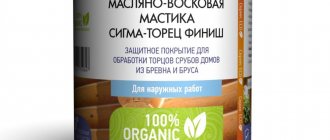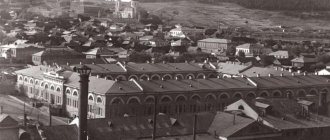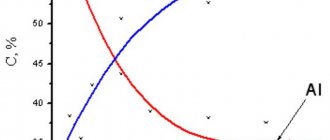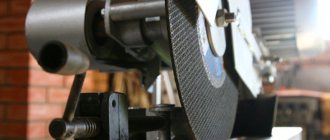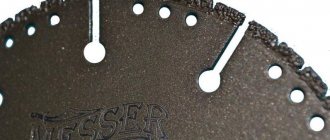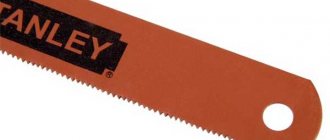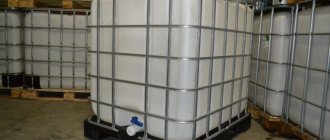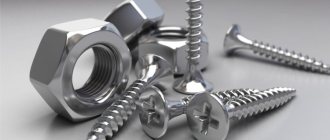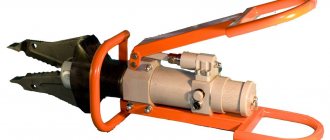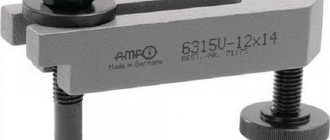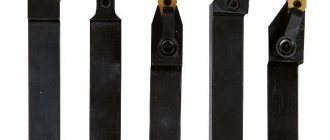Types of putty for metal
- Polyester putty. It is based on resins of various species combined with a hardener. The big advantage of such a substance is its low shrinkage, which prevents the appearance of cracks. If such putty for metal is supplemented with reinforcement with fiberglass mixtures, then it is even possible to get rid of through holes and unwanted holes. If you additionally introduce metal powder, then such a mixture can obtain much better resistance to vibrations and vibrations. The polyester finish should not be applied to anti-corrosion primer, plastic materials or paint surfaces. It has a very small percentage of shrinkage - about a tenth of a percent, which allows this putty to be applied in several layers. Each layer will have excellent adhesion to different materials.
- Epoxy look. This metal putty is considered the best by many craftsmen and is used very often. This composition for metal processing practically does not shrink at all, and its resistance even to chemical influences makes the metal treated with such putty almost invulnerable. The epoxy mixture may contain talc or chalk. This is done in order to eliminate the possibility of dripping from sharp vertical sides of any metal object.
- Pentaphthalic putty. In this form, the percentage of shrinkage is quite large, as for metal processing products - about 5 percent. But if there are micro-damages on a strip of metal that are very difficult to notice, then such a pentaphthalic mixture may be ideal.
- Nitro putty. Received many well-deserved stars for ease of use and operation. They do not require the addition of hardeners. The only negative is the shrinkage of up to 15 percent, which exceeds even the pentaphthalic type. Nitro putty is also used only to eliminate minor scratches and irregularities. A very big and, perhaps, the only advantage of this type of mixture is its short drying time - about two hours. And such putty can tolerate temperature very easily.
It should also be taken into account that the polyester type can be divided into finishing and finishing. Like standard plaster for walls, one of its subtypes acts as a starting layer, and the second as a finishing layer. There are also fine-grained subspecies, medium-grained and coarse-grained. The larger the grain, the larger the diameter of the hole you can putty. But when using a coarse-grained mixture, the last layer should be fine-grained in order to idealize the surface.
Why putty metal?
Why do you need to putty metal surfaces? There may be several reasons for this, including:
- repair of the car and its components. In the event that the metal parts of the car have been scratched, beaten or broken, plastering is used as a method of leveling and giving an even appearance;
- anti-corrosion treatment. A layer of putty is applied to the metal so that it is not subject to corrosion by water and moisture. This is a very durable protection that can protect the metal from any influences;
- thickening of the metal layer. If it is necessary to make the metal layer stronger and thicker, various mixtures can also be used.
If you will take the entire work process on your shoulders, and not in the hands of a master, then be sure to acquire such assistants as metalworking spatulas of various sizes, sandpaper, a hand sander, specialized putty and a solvent or hardener.
Application Features
As when choosing regular plaster for walls, putty for metal should be selected according to predetermined requirements. At home, determine which type is more suitable, which manufacturer you trust - and go to the store. Right there you should carefully read and study the detailed instructions. She will immediately let you know what else you need to purchase. In the same instructions for the product there will be an exact indication of the mixing rules. In metal putty, it is very important to mix the mixture and hardener correctly. If there is a lot of the second one, it may come out after applying the putty. If there is not enough of it, then perhaps the processed metal will not have the necessary strength.
The mixture should be applied in small quantities. When starting work, prepare a very small container and try to fill a tenth of the planned volume. After this, you will determine how to mix it correctly and how it is more convenient to use. In any case, there should not be a lot of induced solution at once, since it quickly deteriorates, dries out and loses its qualities. And this can subsequently have a dramatic effect on the metal processing itself. When combining putty and hardener, be careful with the volumes of the first and second. Use both solutions as accurately as possible. To do this, you can use not only a measuring cup and spoon, but also a syringe with large volumes.
Putty for metal surfaces for outdoor use
The composition contains organic resins and mineral fillers.
What are its features
The product is intended for filling defects on metal surfaces.
Putty (for metal) has a number of advantages:
- forms a waterproof connection;
- dries quickly (in about 30 minutes).
- Easily applied to cracks and adheres reliably.
To obtain the optimal effect, putty is applied to the surface in several thin layers. Before application, degrease the base, dry it, and clean it of dust and other particles that can reduce the quality of gluing.
Why putty metal?
Any scratch or dent weakens the structure of the paintwork. In such places, under the influence of unfavorable weather conditions (for example, low temperature, humidity, etc.), corrosion may develop. Therefore, as soon as a defect appears, the base should be treated immediately.
Video “Applying putty to metal”
The video shows one of the methods of applying putty to metal.
There are putties for metal, which are divided into one- and two-component. Manufacturers produce mixtures of different compositions:
- polyester;
- epoxy;
- nitro putty;
- pentaphthalic.
Each composition has its own specific characteristics and features when applied to the surface. If you have a choice when buying a putty for metal products, you need to pay attention to its properties; a high-quality putty should have the following:
- short drying time;
- high adhesion to the coating;
- high degree of ductility, even after drying;
- ease of application and maximum surface leveling;
- minimum shrinkage after completion of work;
- compatibility with varnishes or coloring components.
Which metal putty is better, everyone decides for themselves when purchasing.
Polyester
Two-component putties are polyester-based compounds to which a hardener must be added before use. The advantages of this type of putty are that it:
- does not shrink;
- has a high degree of adhesion to the surface;
- heat resistant;
- easy to apply.
On the construction market, polyester putties are presented in the following versions:
- Finishing or finishing. They provide sealing of cracks, dents and scratches, at the same time maximally leveling the coating.
- Fine-grained composition. This option is used to eliminate small cracks and irregularities.
- Medium-grained and coarse-grained. Such mixtures can be used to fill large holes and dents; they can be applied either to a clean surface or to one previously treated with putty.
Manufacturers of building materials produce putty mixtures for metal in the form of powder (reinforced metal) and fiberglass. The former are resistant to vibrations, they need to be used on a flat surface, the latter are capable of repairing through holes, noticeable irregularities and large dents; these types of mixtures are not resistant to shaking and mechanical influence.
The main advantage of polyester putty is that the unused part of it, to which no hardener has been added, can be stored further, until the expiration date indicated on the packaging, and will not become unusable. Hardener and base must be stored separately.
Advice! If you need a high-temperature putty for a metal surface, choose from a range of polyester blends that have heat-resistant properties.
On the video: how much hardener should be added to the putty.
Epoxy
Epoxy putty for metal is also two-component. It has the following advantages:
- high strength;
- anti-corrosion properties;
- resistance to chemical influences;
- minimal shrinkage after hardening;
- can be applied even in a thick layer;
- high adhesion to any type of coating;
- long period of use;
- the ability to apply over old coating without priming;
- economical cost of the material;
- the drying time of the composition is relatively fast (about 8 hours);
- Easily sanded with tools.
Nitro putties
Nitro putty is a composition based on one component that is immediately ready for use. The material is easy to putty on metal parts, but has shrinkage of up to 15%. The mixture is used to seal small scratches and dents. The coating layer is applied at a time no more than 1 mm, so the area is coated a couple of times. Before starting puttying, it is recommended to prime the surface.
In nitro putty, the main volume of the mass is occupied by the special fillers that are included in it. Fillers can be neutral powders or fibers that increase volume. The type of composition depends on the filler; it can be:
- Fine grained. Makes the surface smooth and almost without pores.
- Coarse grain. It has high strength, which makes application difficult.
- Powder reinforced (steel or fiberglass). This type is the most durable; even through holes can be sealed with this putty.
- Lightweight. Needed to fill large holes without enlarging the parts being restored.
The texture of nitro putties can be paste-like (applied with a spatula) or liquid, which is applied with a brush.
Pentaphthalic
Pentaphthalic mixtures have a noticeable shrinkage of 3 to 5% and are suitable for removing minor damage. This kind of metal putty must be applied in a very thin layer to avoid cracks. In addition, pentaphthalic putty requires drying at temperatures up to +80°C.
Features of applying putty to metal surfaces
If you decide to treat the surface with a putty layer yourself, you need to choose the appropriate type of material; everyone decides for themselves which type is more suitable for a particular situation. However, epoxy is more in demand, so the description of the work will be carried out with it. The work steps include the following:
- They start by preparing the surface for applying putty. The product must be thoroughly cleaned of all types of contaminants and corrosive areas. Next, degreasing is carried out; any universal product is suitable. Treatment with a primer mixture. The epoxy composition does not require priming.
- The putty mixture is mixed with the hardener. There is no need to mix the entire composition; a small amount is selected, sufficient to process a specific product. It is necessary to obtain a homogeneous mass.
- A thin spatula is used, it applies the composition to the flaws, and excess parts are also removed immediately with the help of it. If you need to apply 2-3 layers, then each one must dry completely.
- After the layer has completely hardened, the surface should be sanded using sandpaper moistened with water. As a result, you get a smooth base that will be ready for the painting or varnishing stage.
When working with epoxy putty, the technician must wear protective gloves. Work carefully to prevent the composition from coming into contact with the skin.
DIY metal putty
Before you start puttingtying a metal surface with your own hands, you need to decide on the type of mixture that will be suitable in this case. However, among the variety of putty materials for metal, the most popular is a mixture with an epoxy composition.
After acquiring the necessary material, a step-by-step process occurs:
- The first step is to prepare the coating well, remove rust and dirt, degrease and prime it. If you use an epoxy mixture, you can do without a primer.
- A certain amount of putty that will be needed for the job must be mixed with a hardener. After thoroughly mixing the base until smooth, you can begin puttying.
- Using a thin spatula, apply the mixture to scratches, dents or existing holes in the metal. The excess is carefully removed with the same spatula so that there are no flaws.
- When the putty solution hardens on the surface, it must be sanded with sandpaper soaked in water. The result is a smooth and even surface, ready for powder painting in the desired color.
Types of putties for metal and their differences
Assortment of consumables for body work in a specialized store
Putty for metal is a product with a paste-like, less often liquid, consistency. By applying the product to metal surfaces, minor defects can be eliminated before subsequent painting.
Consistency of putty, ready for use
According to the composition, putties for leveling metal surfaces are divided into the following types:
- Polyester compounds with low shrinkage and low tendency to crack;
- Epoxy compositions are the most common, since the quality of the finished result is slightly inferior to polyester analogues, while their price is lower;
- Pentaphthalic compositions are characterized by low cost and a high degree of shrinkage (on average 5%);
- Nitro putties are characterized by even greater shrinkage compared to pentaphthalic analogues, and therefore are used to level out minor relief.
Conventionally, all of the listed compositions can be divided into:
- One-component - just open the package, mix and you can apply;
- Two-component - sold in the form of a base and a hardener, which must be mixed until smooth.
What to choose - one-component or two-component formulations
Among the listed modifications, only nitro putties do not require mixing with a hardener. But this composition has more disadvantages than advantages.
Additional recommendations
Metal coating experts recommend the following:
- Before starting the work process, you should definitely read the instructions from the manufacturer, first of all, pay attention to the timing of application and the purpose of the putty for a specific coating.
- It is better to prepare the putty mixture in batches so that you have time to use the required volume before it hardens.
- The surface that requires treatment must be clean and free of grease. You can use a universal degreaser for this.
- The hardener and base must be mixed well according to the proportions, otherwise defects may occur during the work process.
- The mixture is applied in thin layers, if there are more than 3 layers, you need to give each layer time to dry. The polyester mixture is dried at a temperature no higher than +75 degrees, otherwise it will crack.
If you need to choose a high-quality putty mixture for working with metal parts, pay attention to its purpose and properties specified by the manufacturer.
How to properly apply putty on metal (2 videos)
This is a more delicate procedure, since the surface must be perfect before applying paint. If it is possible to level the surface without using putty, then this circumstance is preferable, since even the best putty does not improve the protective properties of the coating and significantly worsens the mechanical properties of the paintwork. When using putties, you must proceed from the following provisions. Firstly, all putties, except epoxy and unsaturated polyester putties, can only be applied to a primed or painted surface. Secondly, the thickness of the putty layer should be minimal. The maximum layer thickness is determined by the amount of material shrinkage.
Putties are applied with spatulas, some with a pneumatic spray gun or brush, with appropriate dilution with a solvent. After applying the putty and drying, the putty areas are sanded manually or mechanically using special sandpaper. Shrinkage of various types of putties: - epoxy and polyester putties - about 1%; - alkyd and pentaphthalic 2-4%; — nitro putty — up to 15%. In cases where the shrinkage of the putty is small (epoxy and polyester), it can be applied with a total thickness of up to 2 mm. If the shrinkage is significant (pentaphthalic and nitro putties), putties should be applied in several thin layers with intermediate drying of each layer. In this case, the total thickness of the putty layer should not exceed 0.3 mm. It must be taken into account that in thick layers of these putties, internal stresses can be so great that they can cause cracking of the layer, and cracking is one of the most common defects when filling. Primer-putties are popular for filling small defects before painting. Unlike other putties, they can be applied directly to metal. The industry produces primers of various brands. Before use, it is necessary to add a hardener (50% solution of hexamethylenediamine in alcohol) in an amount of 8.5% by weight. When applying EP-0010 and EP-00-20 putties with a spatula on vertical surfaces, it is recommended, in order to avoid swelling of the putties, to introduce a small amount of fillers into them: kaolin, chalk, talc, etc. These putties can also be applied by pneumatic spraying. To do this, they need to be diluted with solvent R-40, acetone or toluene to a viscosity of 24-27 s and applied in two layers with intermediate natural drying between layers for 15-20 minutes and a total drying duration of 24 hours. Polyester putty is convenient for restoring paint coatings PE-OO-85. It is designed to smooth out deep defects in metal surfaces. Putty PE-00-85 grades A and B is available. Grade A is intended for leveling surfaces exposed to temperatures up to 120 °C for 3 hours. Grade B is for leveling surfaces with possible subsequent exposure to temperatures up to 135 °C for 1 hour The putty demonstrates good adhesion to metals and coating enamels, it is elastic. Curing occurs at a temperature of 20 ° C for 1 hour. Before use, benzoyl peroxide paste is added to the putty at the rate of 2-3 g per 100 g of putty. The pot life of ready-to-use putty is 7-12 minutes. When exposed to temperatures up to 120 °C, the maximum thickness of the putty layer should not exceed 1.5 mm. To eliminate defects up to 2 mm, you can prepare the following putty composition: Epoxy resin ED-16 or 20 25 parts Dibutyl phthalate 10 parts Talc 65 parts Polyethylene polyamine 2.5-3 parts The composition must be used within 20 minutes. At room temperature, hardening time is 24 hours. Pre-painting repairs A few more recommendations: - To correct minor defects during subsequent painting with melamine-alkyd enamels, use PF-002 putty, nitro putty NTs-007, NTs-008, NTs-009 or putty MS-006. If the putty or topcoat is dried at elevated (90-100 °C) temperatures, it is preferable to use MS-006 or nitro putty, since the PF-002 putty tends to crack during hot drying. — Before applying nitrocellulose enamels, surfaces treated with PF-002 putty must be thoroughly dried, then covered with a layer of GF-021 primer and dried for 48 hours. If these recommendations are not followed, the coating may crack. — It is also recommended to coat layers of epoxy putty or primer with GF-021 primer before applying nitro enamel to improve interlayer adhesion. — When working with nitro putties, it is not recommended to run the spatula several times over the same place, as this will create uneven edges and the putty will curl under the spatula.
Description
Description:
“TROTON Spec High Temp” is a high-quality two-component cold-curing polyester putty with excellent resistance to high temperatures up to 200°C. The electrically conductive composition is intended primarily for surface treatment in preparation for powder coating. The product has elasticity and very high adhesion to various substrates after appropriate preparation.
- Very good adhesion to metals.
- Sands well.
- Completely smooth surface after sanding.
- Temperature resistance up to 200°C.
- Conductivity of electric charge.
